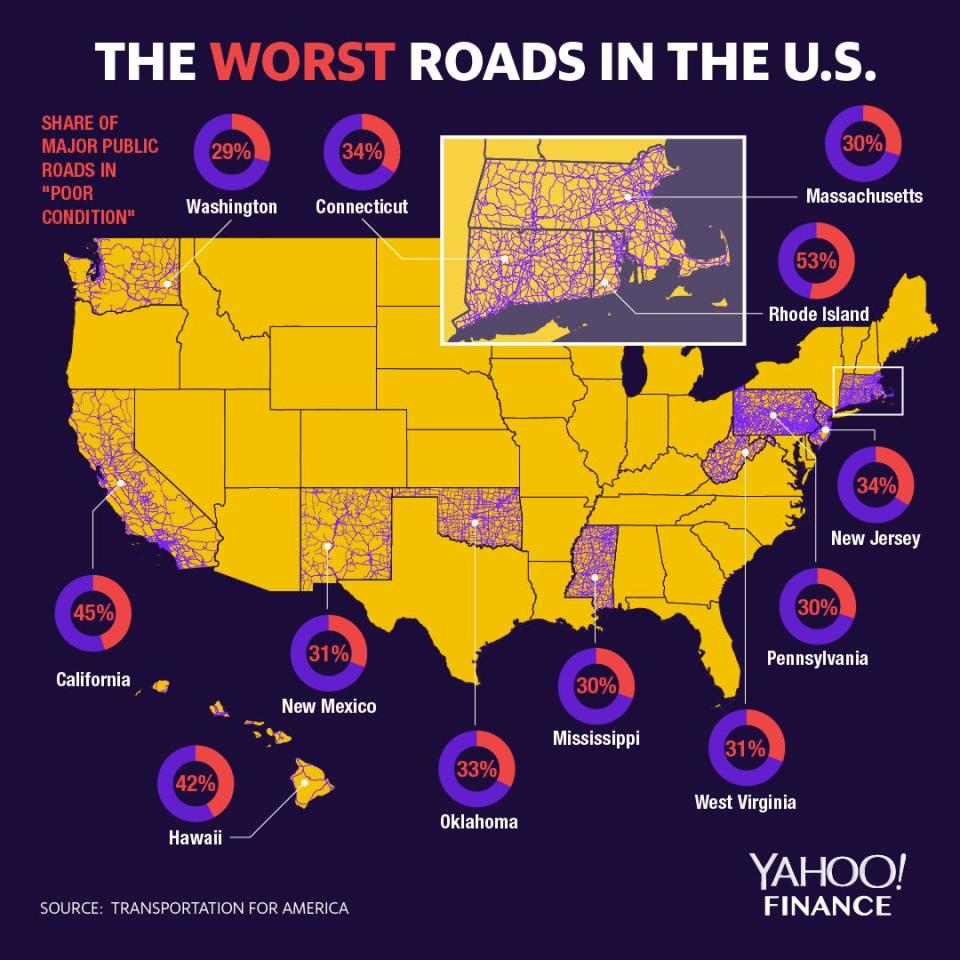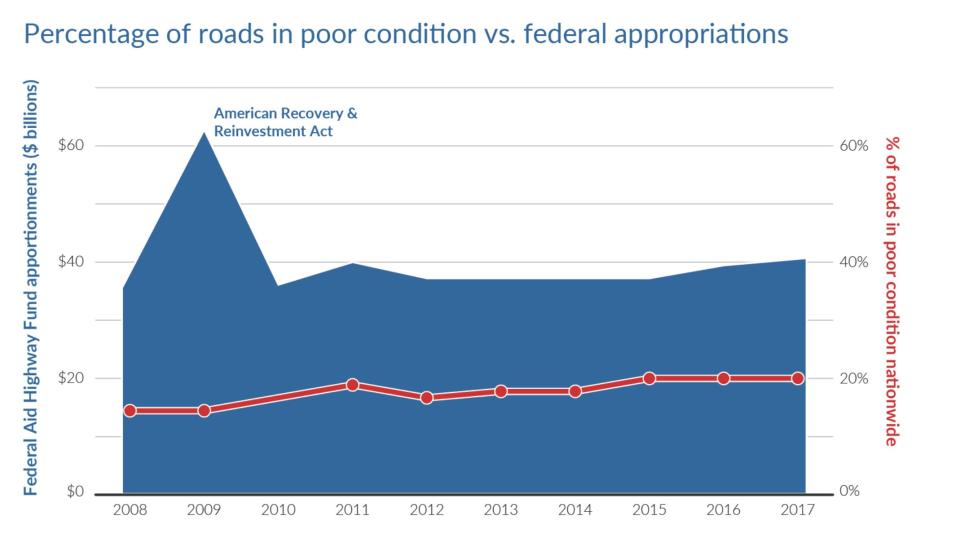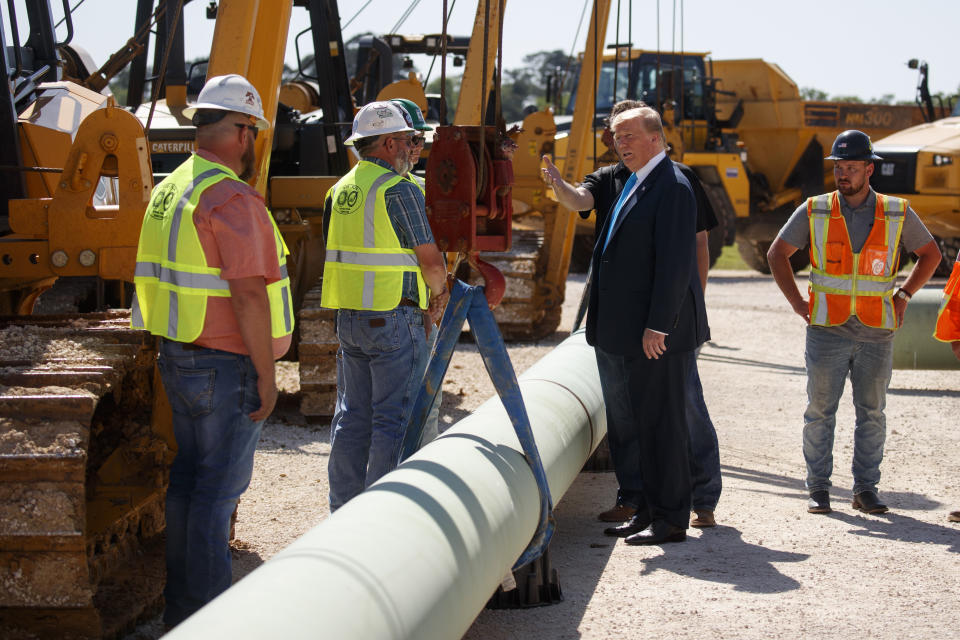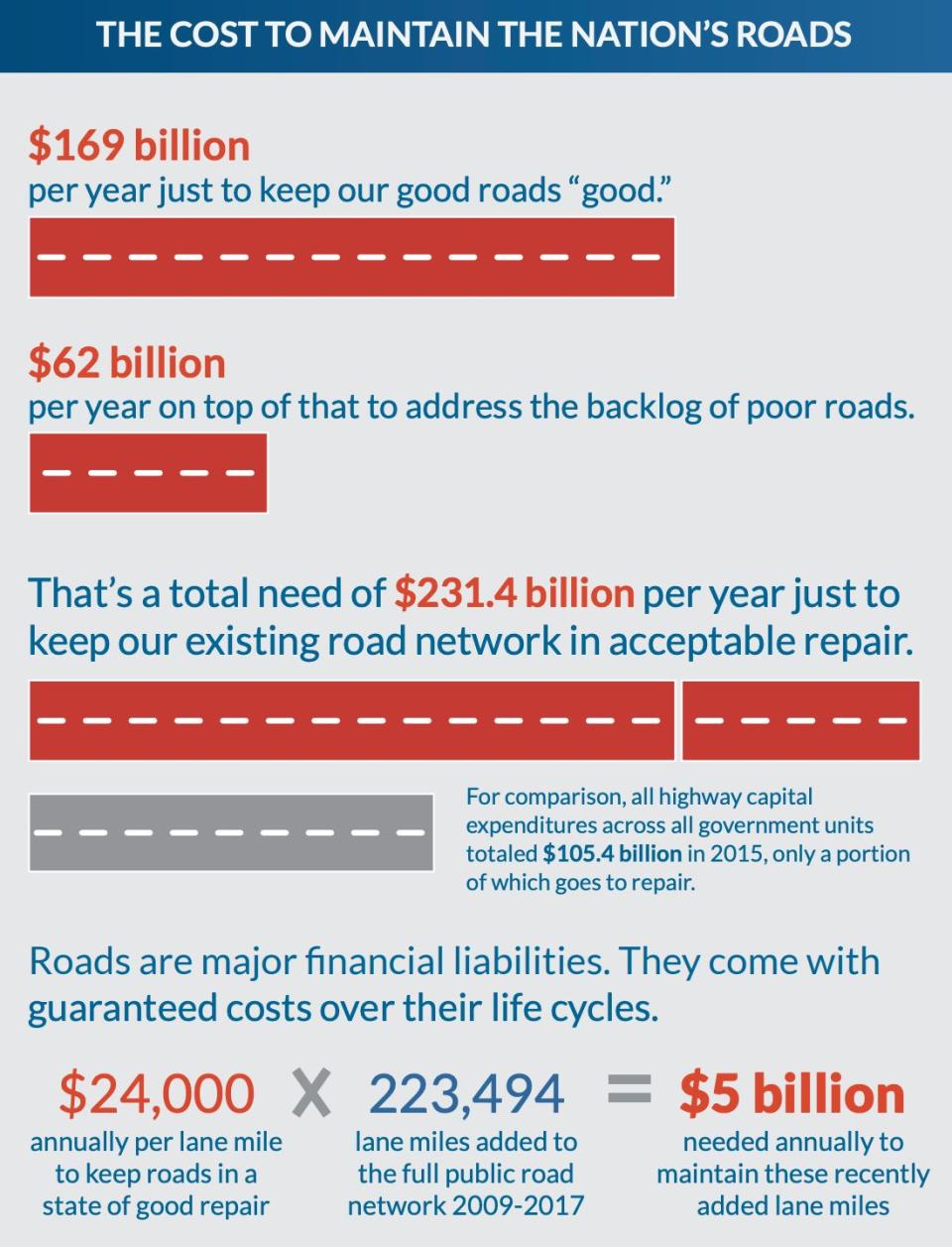Trump’s stalled infrastructure plans leaves these roads a mess
The shoddy shape of America’s roadway infrastructure will continue until President Trump’s Infrastructure Week finally happens.
In the meantime, drivers in Rhode Island should beware: The Ocean State has the highest percentage of public roads in “poor” condition, according to a new report from Transportation for America. Only 11% of Rhode Island’s roads are considered to be in “good” condition.
The study looked at road conditions across the U.S. between 2009 and 2017. During that time, “the percentage of the roads nationwide in poor condition increased from 14 to 20%.” In total, 37 states saw a worsening in the condition of its roads.
After Rhode Island, with 53% of public roads in poor condition, the states with the worst roads include California, Hawaii, Connecticut, New Jersey, and Oklahoma.

‘Infrastructure is really a big economic driver’
Infrastructure woes in the U.S. have been brought to the forefront in the last year, as both Democratic and Republican politicians are trying to pass legislation that would enable funding to fix it.
“Infrastructure is really a big economic driver, and it’s got to be in good condition for our economy to grow and thrive,” Bipartisan Policy Center Director of Strategic Initiatives Michele Nellenbach told Yahoo Finance. “It’s a really critical piece of our future economic outlook.”
And aside from the lack of action from the federal government, some states are trying harder than others.
Although New Jersey is among the top five worst states, the report indicates that it is “spending a significant portion of their available funding on repair and are seeing pavement conditions improve over time.” Between 2009 and 2014, New Jersey spent an annual average of $2,476,888 on capital spending. 57% of that money was used towards roadway repair, the fourth-most among any state.
Mississippi is the state that has used the least amount of its annual capital spending average on roadway repair, at just 4%. The state is the 10th-worst overall in terms of road conditions.

‘Americans waste thousands of dollars every year’
In April 2019, President Trump struck a deal with Democratic leaders to authorize $2 trillion in funding for an infrastructure package.
However, one month later, when the details were supposed to be sorted out, Trump put a halt to the meeting. He stated that he would not continue negotiations with House Speaker Nancy Pelosi and New York Senator Chuck Schumer until “phony investigations” surrounding his administration were completed. And so for now, the state of American infrastructure is caught in limbo.
“Americans waste thousands of dollars every year either sitting in traffic or on car repairs,” Nellenbach said. “They’re hitting potholes. They’re doing those types of things and that’s all wasteful. And that’s money that could be used elsewhere.”
“We really hope there will be a bill this year that’s comprehensive, that does public and private, and can really improve our infrastructure so our economy can continue to grow,” she said. “Right now, the economy’s really strong but it needs a strong infrastructure to keep going.”

‘You’ve got to have infrastructure to move product’
Nellenbach stressed the importance of knowing the difference between the two funding avenues.
“You can fund operations/maintenance/repair of the road, or you can fund capital construction for new projects,” she said.
Michigan, for example, is using most of its capital spending towards roadway repair but is “still seeing worsening pavement conditions because the backlog is too great,” according to the report.
Then there are states like Tennessee, which “have been able to maintain a large percentage of their roads in good condition with their available funding, allowing them to devote funds to road expansion without compromising the quality of their existing system,” according to the report.

So, why should funding infrastructure become a top priority?
“No. 1, you need infrastructure to move goods — whether it’s the port the ships come into or the roads leading from the port to get to factories or stores,” Nellenbach said. “You’ve got to have infrastructure to move product.”
But, she continued, “you also need infrastructure to move people. We can’t get to our jobs, our kids can’t get to school, and we can’t get to the store if the roads aren’t any good.”
‘You don’t do ribbon cutting because you filled a bunch of potholes’
The study highlighted how the U.S. is facing a spending gap when it comes to repairing its roads. In order to keep existing roads in “acceptable repair” and fix the poor ones over a six-year period, it’s estimated that the country would need $231.4 billion per year.
“By comparison, all highway capital expenditures across all government units totaled $105.4 billion in 2015, only a portion of which goes to repair,” the report noted.

Nellenbach predicted that it will be the new projects that get the most attention — and therefore funding.
“You don’t do ribbon cutting because you filled a bunch of potholes,” she said. “You do ribbon cuttings because you’ve opened a new expressway and it helped ease traffic.”
She added: “That’s where the money tends to go: the new shiny object, as opposed to the much less glamorous but still needed maintenance of existing infrastructure. The roads continue to deteriorate while we put more resources in the new roads that we also probably aren’t going to maintain appropriately.”
Adriana is an associate editor for Yahoo Finance. Follow her on Twitter @adrianambells.
READ MORE:
The Trump administration is holding up a crucial infrastructure project
U.S. Chamber: Fixing infrastructure could 'turbo-charge' economy
Read the latest financial and business news from Yahoo Finance
Follow Yahoo Finance on Twitter, Facebook, Instagram, Flipboard, SmartNews, LinkedIn, YouTube, and reddit.

 Yahoo Finance
Yahoo Finance 
